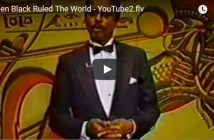Source: http://atlantablackstar.com
Enslaved Blacks and Africans did not readily accept slavery. There were many uprisings where white settlers were slain or injured, in the South and North. Plantation owners were fearful for their lives from a violent rebellion, so much so that they came together to create what they called “slave codes,” a succession of laws (some differed by colony) that restricted enslaved people’s behavior to control their actions and reduce the chances of an uprising.

Rejecting Slavery, a Crime Punishable by Death
Since the slave codes were inspired by the fear of Blacks, it’s not surprising that the most cruel and inhumane punishments were reserved for those who most rejected slavery. Attempting “to raise an insurrection” meant certain torture and death, but capital punishment was used for even lesser acts of resistance, such as destroying “any stack of rice, corn or other grain” or setting fire to “any tar kiln, barrels of pitch, tar, turpentine or rosin,” according to encyclopedia.com. Free Blacks who harbored escapees would be beaten by the slave owner and fined.

No Right to Bear Arms or Self-Defense
Blacks were prohibited from possessing weapons or lifting a hand against any white person, even in self-defense. If caught carrying a gun, the enslaved would receive 39 lashes with a whip and forfeit his weapon. In some places, even free Blacks couldn’t carry a gun. Eerily similar to how the police violence is protected by the laws of today, resisting the violence of a slaveholder or overseer granted them the right to kill that enslaved Black person without fear of prosecution.

Legal Imbalance
An enslaved person accused of a crime — any crime — against a white person was akin to a death sentence … or worse. There was only one side of the story presented in a court of law, and it was not the enslaved person’s. And the juries, of course, were all white. A Black enslaved man accused of raping a white woman would almost always be put to death or castrated, while for white men, it was open season on the Black woman’s body.

Travel Restrictions
Enslaved people could travel only with written permission from their masters, and any Black person in bondage attempting to run away and leave the colony (later, state) was subject to the death penalty. In the South, those who evaded capture for 20 days or more would be publicly whipped for the first offense; branded with the letter R on the right cheek for the second offense; lose an ear for the third offense; and castrated for the fourth offense. Elsewhere in the Americas, similar cruel punishments were inflicted on Blacks, such as the cutting of hamstrings and the splitting of noses. In many places, enslaved Blacks who ran away and refused to surrender could be killed without penalty.

Slave Codes Target Skin Color and Gender
In the South from 1776 to 1861, Blacks, mulattos (mixed white and Black background), Indians and mestizos (mixed Indian and white parentage) were assumed to be slaves and were treated as such, subject to all so-called “slave codes.” However, as the U.S. institution progressed, the focus became the enslavement of Blacks in particular. So laws were written to determine the status of human beings by skin color and the status of their mother. In Virginia, for example, only a free woman could have free offspring, but if a free white woman tied the knot with an enslaved Black man, she had to become the property of her husband’s master.

Blacks Could Be Owned But Couldn’t Own a Thing
Enslaved Blacks were not allowed to own property, as they were considered property. To have ownership of something, even their own name, would be empowering, and the plantation owners were adamant about suppressing any feelings of self-esteem.

No Congregating of Black People
The slave code prohibited the enslaved from assembling without a white person present for fear they might organize or express support to each other.

Blacks Were Prohibited from Reading and Writing
In a particularly debilitating move, whites made it illegal for the enslaved to read or write. Anyone operating a school or teaching reading and writing to any African-American in Missouri could be punished by a fine of not less than $500 and up to six months in jail. Especially in the South, so-called Christian values made the Bible the only exception to the “no slaves reading” laws.

Prohibited from Marrying
Whites did not recognize marriage between two enslaved people, as it made it easier for them to break up a family through selling. In the French colonies, weddings between enslaved Blacks had to be carried out only with the masters’ permission, and it had to be a Catholic wedding to be recognized.

Black Bodies Were Completely Commodified
The more enslaved people violently fought back in rebellion, the greater the severity of the slave codes, limiting even more the movements or rights of the oppressed. For example, the enslaved were offered as prizes in raffles. They were put up as wagers in gambling and offered as security for loans and even dispensed as gifts from one person to another — anything to degrade them and keep their morale low.






